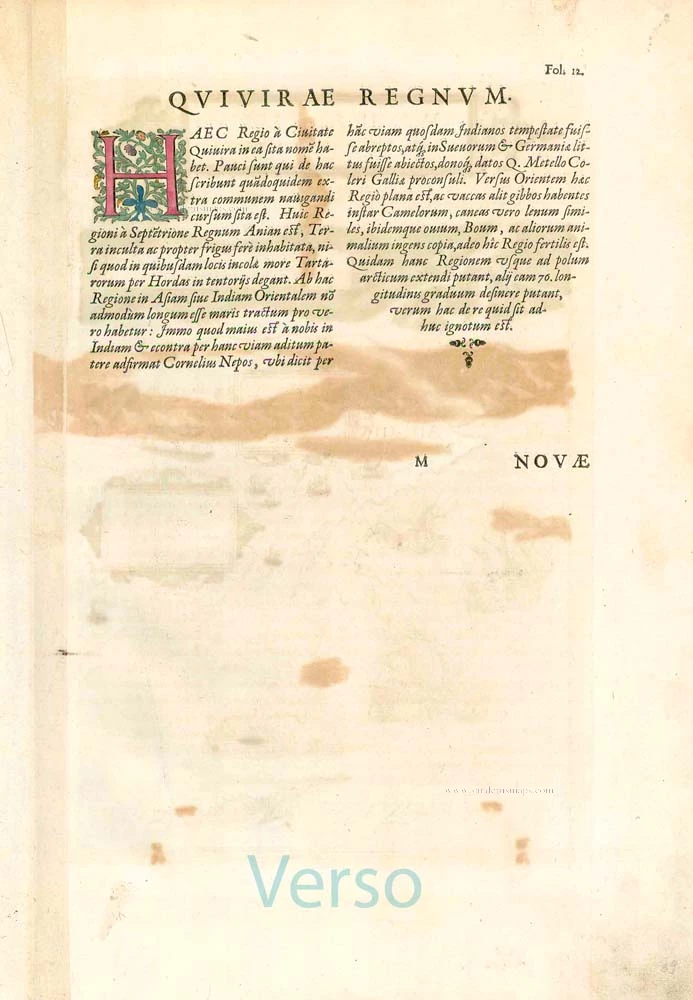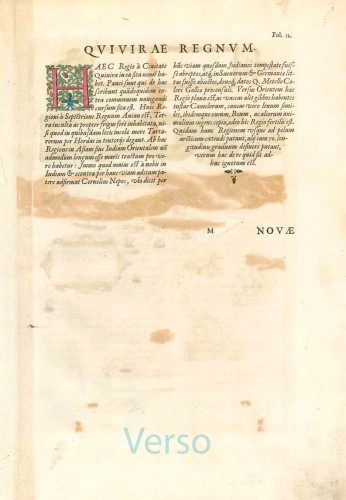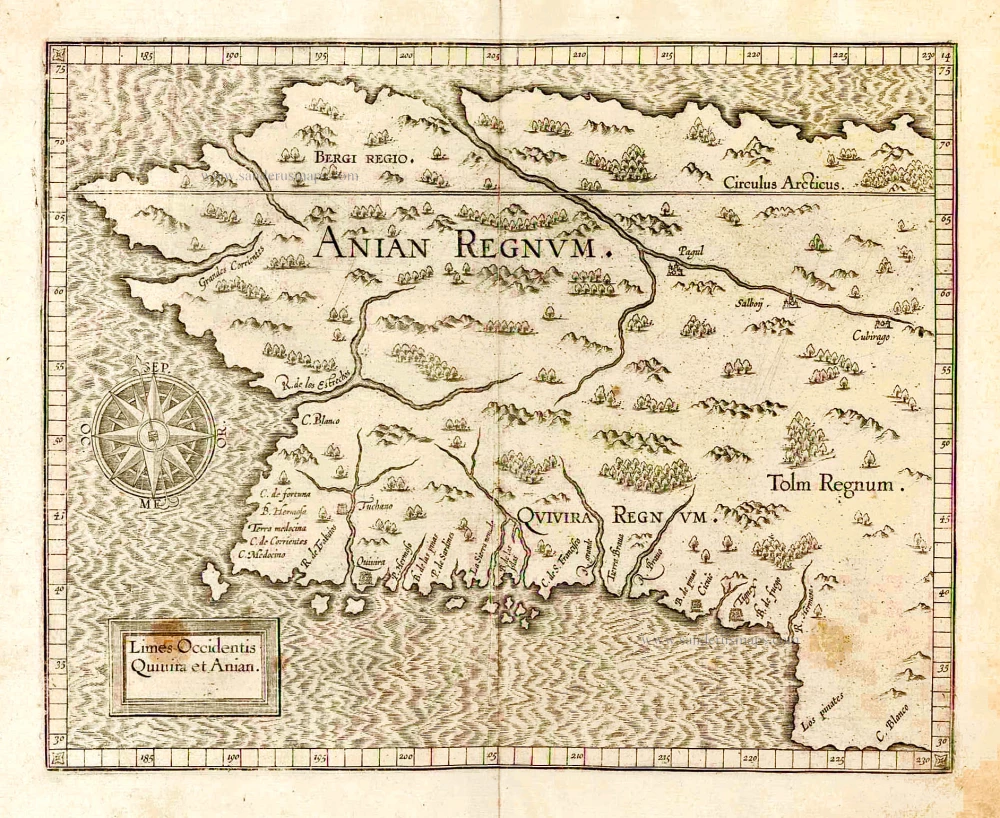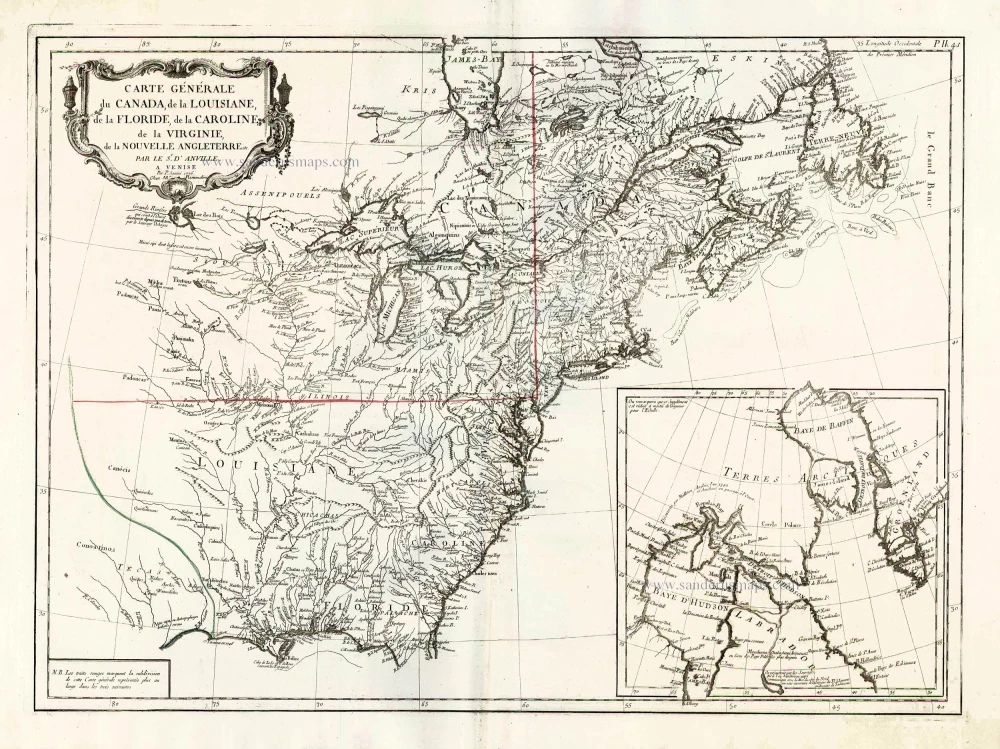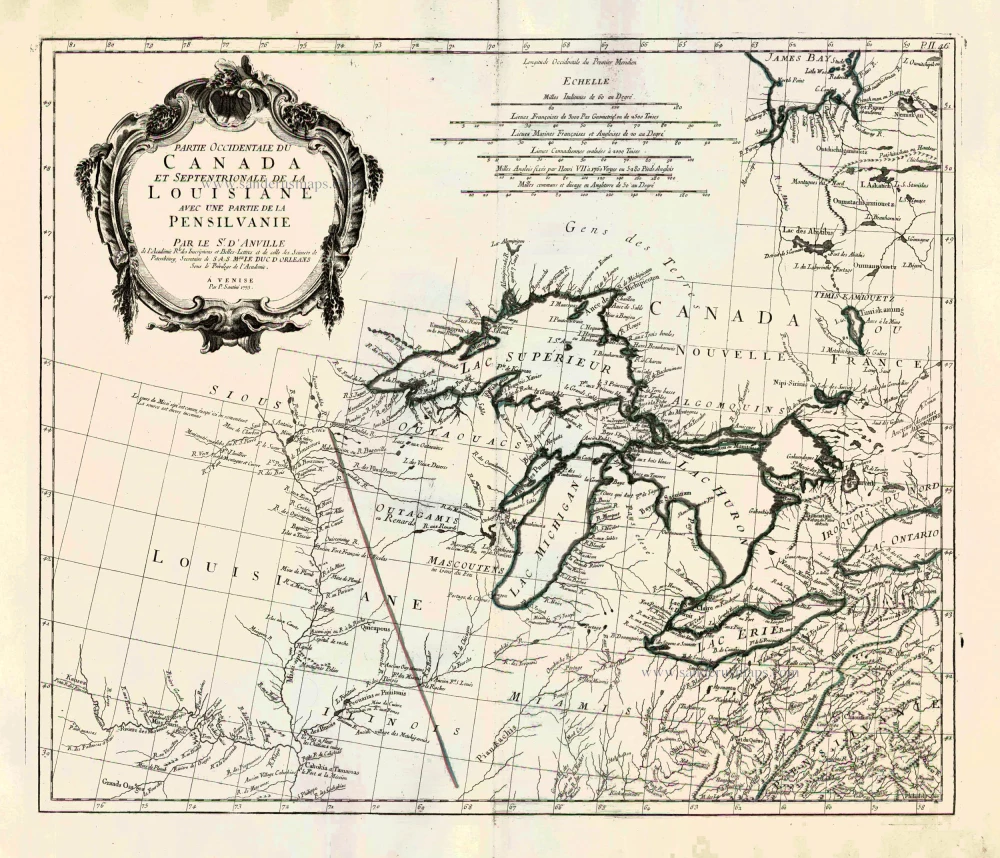Old antique map of Northwest North America by Cornelis de Jode. 1593
Quivirae Regnu ...: "Like the Americae Pars Borealis this single sheet map is largely derived from the eighteen sheet world map by Petrus Plancius of 1592. It is the first published map devoted to the west and north-west coasts of North America, and comes from de Jode's very rare atlas entitles Speculum Orbis Terrae.
It depicts the west coast from below the Tropic of Cancer to the North Pole here represented by the top border of the map. Part of the four islands derived from Mercator surrounds the pole. Belows this runs the western end of the North West Passage leading into the El Streto de Anian. At this point we find the legend Polus Magnetis respectu insularu Capitis Viridis, and early indication of the magnetic pole. The map couples perfetly with the map Americae Pars Borealis to complete the coverage of North America. The inland details largely reflect the extent of various beliefs and legends that existed at the time; only part of the coastline records first hand knowledge. It is beautifully adorned with mythical sea creatures and ships.
Being issued in only one edition the map is very rare. There is only one known state of it." (Burden).
Gerard and Cornelis de Jode
Gerard de Jode (Judaeus) (1508(?)-1591), a native of Nijmegen, began his career as a printer and engraver in Antwerp about 1550. He lived near the Bourse on the Catelijne Veste, or on "de Catte". He was in regular contact with Christoffel Plantin, to whom he sold many prints and maps. De Jode's business, which must have been a major one among Antwerp's many booksellers and printers, was represented at the Frankfurt fair, where de Jode bought maps that he later copied or re-sold. Most of the maps sold by De Jode have prototypes of Italian or German origin. Apart from his many separately published maps, Gerard de Jode is known for his atlas, Speculum Orbis Terrarum, published in 1578. Part of the engraving was done by himself, and part by brothers Jan and Lucas van Doetecum.
Gerard de Jode and Abraham Ortelius, who partly lived as map sellers, were competitors and only sometimes on good terms.
After the death of Gerard de Jode in 1591, the business was carried on by his widow, Pascale van Gelder and his son, Cornelis (1568-1600). More a publisher than an engraver, the latter reissued the Speculum in 1593, adding new maps and revising others.
Despite all its deficiencies, the Speculum must have had a good reputation. It is mentioned alongside Mercator's Atlas and Ortelius's Theatrum in Petrus Montanus's preface to the Germania Inferior of Pieter van den Keere.
Quivirae Regnu cum Alijs versus Borea.
Item Number: 25775 Authenticity Guarantee
Category: Antique maps > America > North America
Old antique map of Northwest North America, by Cornelis de Jode.
Title: Quivirae Regnu cum Alijs versus Borea.
Date of the first edition: 1593.
Date of this map: 1593.
Copper engraving, printed on paper.
Size (not including margins): 350 x 245mm (13.78 x 9.65 inches).
Verso: Latin text.
Condition: Original coloured, offsetting, some staining.
Condition Rating: A.
From: Speculum Orbis Terrae. Antwerpen, G. De Jode, 1593. (Van der Krogt 3, 2:02)
Quivirae Regnu ...: "Like the Americae Pars Borealis this single sheet map is largely derived from the eighteen sheet world map by Petrus Plancius of 1592. It is the first published map devoted to the west and north-west coasts of North America, and comes from de Jode's very rare atlas entitles Speculum Orbis Terrae.
It depicts the west coast from below the Tropic of Cancer to the North Pole here represented by the top border of the map. Part of the four islands derived from Mercator surrounds the pole. Belows this runs the western end of the North West Passage leading into the El Streto de Anian. At this point we find the legend Polus Magnetis respectu insularu Capitis Viridis, and early indication of the magnetic pole. The map couples perfetly with the map Americae Pars Borealis to complete the coverage of North America. The inland details largely reflect the extent of various beliefs and legends that existed at the time; only part of the coastline records first hand knowledge. It is beautifully adorned with mythical sea creatures and ships.
Being issued in only one edition the map is very rare. There is only one known state of it." (Burden).
Gerard and Cornelis de Jode
Gerard de Jode (Judaeus) (1508(?)-1591), a native of Nijmegen, began his career as a printer and engraver in Antwerp about 1550. He lived near the Bourse on the Catelijne Veste, or on "de Catte". He was in regular contact with Christoffel Plantin, to whom he sold many prints and maps. De Jode's business, which must have been a major one among Antwerp's many booksellers and printers, was represented at the Frankfurt fair, where de Jode bought maps that he later copied or re-sold. Most of the maps sold by De Jode have prototypes of Italian or German origin. Apart from his many separately published maps, Gerard de Jode is known for his atlas, Speculum Orbis Terrarum, published in 1578. Part of the engraving was done by himself, and part by brothers Jan and Lucas van Doetecum.
Gerard de Jode and Abraham Ortelius, who partly lived as map sellers, were competitors and only sometimes on good terms.
After the death of Gerard de Jode in 1591, the business was carried on by his widow, Pascale van Gelder and his son, Cornelis (1568-1600). More a publisher than an engraver, the latter reissued the Speculum in 1593, adding new maps and revising others.
Despite all its deficiencies, the Speculum must have had a good reputation. It is mentioned alongside Mercator's Atlas and Ortelius's Theatrum in Petrus Montanus's preface to the Germania Inferior of Pieter van den Keere.


